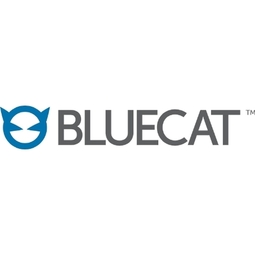公司规模
Large Corporate
地区
- America
国家
- United States
产品
- BlueCat Address Manager
技术栈
- IP Address Management (IPAM)
- DNS/DHCP core services
实施规模
- Enterprise-wide Deployment
影响指标
- Productivity Improvements
- Digital Expertise
技术
- 网络与连接 - 网络管理和分析软件
适用行业
- 教育
- 医疗保健和医院
适用功能
- 维护
- 商业运营
服务
- 系统集成
- 培训
关于客户
The Medical University of South Carolina (MUSC) is the only comprehensive academic health center in South Carolina. It offers educational programs in the biomedical sciences, dentistry, health professions, medicine, nursing, and pharmacy. Each year, MUSC admits almost 33,000 patients to its hospitals, while its outpatient facilities serve 800,000 patients. The university has nearly 3,000 students in six colleges and 1,500 full and part-time teaching staff. MUSC's network spans 30+ remote sites and its IP address space is comprised of approximately 30,000 IP addresses. The network must support the diverse needs of both the hospital and university, as well as the intensive demands of medical researchers for online collaboration.
挑战
The Medical University of South Carolina (MUSC) is a comprehensive academic health center with nearly 3,000 students, 1,500 teaching staff, and a 750-bed medical center. The university's network spans over 30 remote sites and comprises approximately 30,000 IP addresses. The network must support the diverse needs of both the hospital and university, as well as the intensive demands of medical researchers for online collaboration. The number of IP-connected devices on the network is growing exponentially, including smart phones, tablets, and specialized healthcare devices like wireless IV pumps. In addition, security cameras and door locks that used to be hard-wired are now IP-enabled. To maintain the reliability of the network and better serve its users, MUSC needed an efficient way to manage, automate, and delegate day-to-day network administration tasks.
解决方案
In March 2011, MUSC’s network and UNIX administration teams began to look at options to replace their defunct Nortel NetID system. They needed a new solution that would simplify and automate IP Address Management (IPAM) and DNS/DHCP core services for all networks across the organization, while also allowing tasks to be delegated among administrators and field engineers. They evaluated other IPAM solutions including BT Diamond and Alcatel-Lucent (VitalQIP) before finally selecting BlueCat. BlueCat’s IPAM solution provides centralized management and visibility into “everything IP” in the network including IP addresses, DNS, and DHCP. The solution includes a built-in workflow engine and change control system to free up time and resources by pushing recurrent network administration tasks out to the field with full approval and auditing controls. The BlueCat solution was successfully deployed using a phased approach to minimize the risk of network disruption or downtime.
运营影响

Case Study missing?
Start adding your own!
Register with your work email and create a new case study profile for your business.









